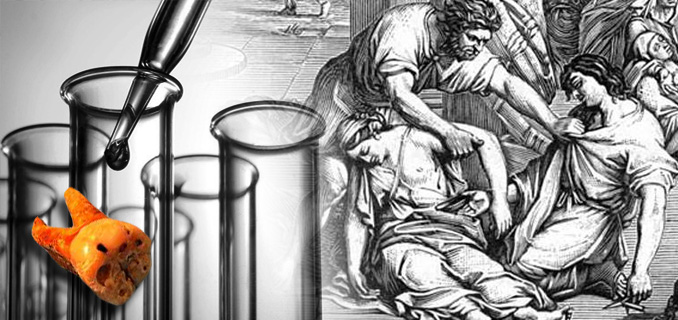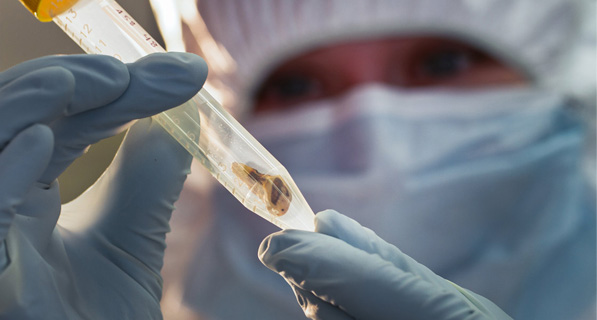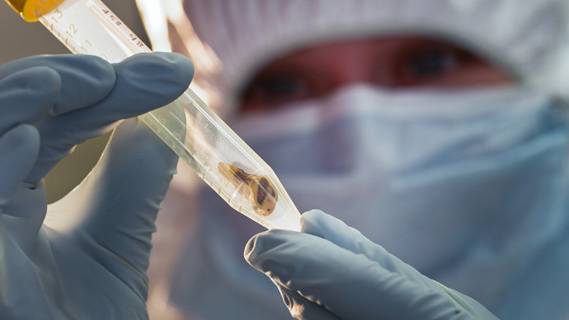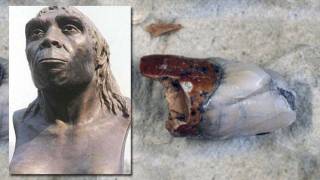Ancient Plague’s DNA Revived From A 1,500-Year-Old Tooth
Source: npr.org

Scientists have reconstructed the genetic code of a strain of bacteria that caused one of the most deadly pandemics in history nearly 1,500 years ago.
They did it by finding the skeletons of people killed by the plague and extracting DNA from traces of blood inside their teeth.
This plague struck in the year 541, under the reign of the Roman emperor Justinian, so it’s usually called the Justinian Plague. The emperor actually got sick himself but recovered. He was one of the lucky ones.
"Some of the estimates are that up to 50 million people died," says evolutionary biologist David Wagner at Northern Arizona University. "It’s thought that the Justinian plague actually led partially to the downfall of the Roman Empire."
The plague swept through Europe, northern Africa and parts of Asia. Historians say that when it arrived in Constantinople, thousands of bodies piled up in mass graves. People started wearing name tags so they could be identified if they suddenly collapsed.

Given the descriptions, scientists suspected that it was caused by the bacterium Yersinia pestis — the same kind of microbe that later caused Europe’s Black Death in the 14th century.
The bacteria get spread by fleas. After someone gets infected from a flea bite, the microbes travel to the nearest lymph node and start multiplying. "And so you get this mass swelling in that lymph node, which is known as a buboe," says Wagner. "That’s where the term bubonic plague comes from."
The Justinian plague has been hard to study scientifically. But recently, archaeologists stumbled upon a clue outside Munich.
Housing developers were digging up farmland when they uncovered a burial site with graves that dated as far back as the Justinian plague.
"They found some [graves] that had multiple individuals buried together, which is oftentimes indicative of an infectious disease," Wagner says. "And so in this particular case, we examined material from two different victims. One of those victims was buried together with another adult and a child, so it’s presumed that they all may have died of the plague at the same time."
Skeletons were all that was left of the pair. But inside their teeth was dental pulp that still contained traces of blood — and the blood contained the DNA of plague bacteria.
[...]
"The biology of the pathogen no doubt could cause another pandemic if it weren’t for the changes in human culture and medicine," Keim says.
These days, though, antibiotics can quickly stop plague outbreaks in their tracks.
Read the full article at: npr.org
Red Ice Creations Note:
Two things we should remember when presented with news that infections diseases have been isolated and reconstructed; 1) Scary viruses and other bio-agents are being concocted in high-security labs around the world (and viruses sometimes get ’misplaced’), and 2) The idea that antibiotics will be able to save us from plague in future is misguided, especially with the repeated warnings that antibiotics are quickly becoming ineffective.
Check out the following articles for more....
Antibiotics Can’t Keep Up With ’Nightmare’ Superbugs
Oops: Vial of deadly virus goes missing from secure biomedical lab
U.S. virologists intentionally engineer super-deadly pandemic flu virus






















